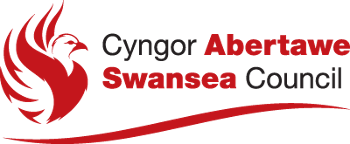Frequently asked questions about road maintenance
Find out answers to the most common questions we get asked about road maintenance.
How often do road sweepers visit road and footways?
We have a small number of road sweepers (large and compact mechanical brush vehicles - MBVs) which sweep adopted highways including footways. The MBVs generally focus on sweeping high priority areas such as the city centre and other shopping areas for example. These areas are swept on a daily basis. They also concentrate on those highways which have a high volume of traffic where accumulations of waste and loose debris could present a hazard and an increased risk to road users.
MBVs also sweep other highways and outlying areas on a programmed work schedule but the frequency of the visits is subject to change depending on other priorities. MBVs are often required to respond to road traffic accidents and other hazards on the adopted highway. Specific requests for the MBV to sweep a particular road/area will be assessed on their individual merits and actioned as appropriate whilst taking account of the programmed work schedule.
During the autumn and winter period the MBVs also focus on clearing areas of high leaf fall to minimise surface flooding, for example, and potential hazards presented by wet slippery leaves, so far as is reasonably practicable.
How much money have you spent on road maintenance?
| 22/23 | 21/22 | 20/21 | 19/20 | 18/19 | |
|---|---|---|---|---|---|
| Capital | |||||
| Capital carriageway resurfacing budget* | £1,270,000 | £1,598,000 | £4,556,000 | £1,744,000 | £2,437,000 |
| PATCH* | £1,180,000 | £783,000 | £721,000 | £665,000 | £650,000 |
| Capital footway resurfacing budget* | £850,000 | £802,000 | £1,273,000 | £1,009,000 | £910,000 |
| Capital drainage budget* | £700,000 | £936,000 | £671,000 | £598,000 | £622,000 |
| Coastal defence capital budget* | £181,000 | £134,000 | £137,000 | £186,000 | £197,000 |
| Welsh Government highways grants | £1,500,000 | £1,891,000 | £1,190,000 | £1,191,000 | £1,786,000 |
| Revenue | |||||
| Structural maintenance budget | £285,121 | £239,700 | £237,900 | £390,900 | £388,900 |
| Routine maintenance budget** | £3,035,645 | £2,943,120 | £2,908,830 | £2,690,130 | £2,585,030 |
| Safety maintenance budget*** | £321,500 | £321,500 | £321,500 | £321,500 | £321,500 |
| Winter maintenance expenditure**** | £808,774 | £499,370 | £702,008 | £305,907 | £353,072 |
* including carry overs
** includes routine patching, potholes, drains, weeding
*** includes signs and lining
**** includes salt stock pile asset value
The total amount of works carried out on the highway is difficult to quantify as works are different and varied. Listed below is a summary.
| 22/23 | 21/22 | 20/21 | 19/20 | 18/19 | |
|---|---|---|---|---|---|
| PATCH repairs (m2) | 40,040 | 23,267 | 16,926 | 16,921 | 17,104 |
| Carriageway resurfacing (m2) | 73,080 | 92,732 | 328,349 | 66,019 | 126,713 |
| Carriageway resurfacing (tonnes) | 8,120 | 8,831 | 15,753 | 7,496 | 11,590 |
| Footway resurfacing (m2) (includes both inlay and thin surfacing treatment) | 9,660 | 12,758 | 22,741 | 16,015 | 13,066 |
| Footway resurfacing (tonnes) (tonnage is for inlay projects only) | 1,486 | 1,963 | 1,469 | * | * |
| Surface dressing (m2) | 29,855 | 14,600 | 93,560 | 90,615 | 59,496 |
| Other treatments (m2) (micro asphalt) | 32,755 | 64,786 | 123,575 | 141,572 |
* Data not held at this time.
How many km of road, in total, are maintained by the council?
Approximately 1,113km.
How many km of footway, in total, are maintained by the council?
Approximately 1,335km.
How many claims for compensation were lodged by drivers as a result of damage to their car on the road?
| Year | Claims received | Total payments made (£) |
|---|---|---|
| 2022/23 | 94 | 388 |
| 2021/22 | 57 | 70 |
| 2020/21 | 76 | 0 |
| 2019/20 | 80 | 478.77 |
| 2018/19 | 82 | 850.03 |
| 2017/18 | 61 | 0 |
How do you prioritise road maintenance schemes?
In Swansea the Highways Service produces a five-year forward programme of works for the repair of roads and pavements. The programme is designed to reduce the key maintenance backlogs over the long term by balancing preventative and reactive works. The most cost effective method of maintaining the highway is through preventative measures but reactive works to repair the worst roads is often needed to ensure the highway remains safe.
A system to assess the priority of resurfacing schemes is used. This assessment includes a visual inspection as well as surveys on surface condition, profile and surface friction.
We consider other factors, in addition to structural condition such as maintenance priority, network importance together with factors such as traffic sensitivity and bus route intensity.
These factors combine to give a score for the section of road being considered which in turn gives a priority ranking. Each road is also assessed for the most suitable treatments,
We are often questioned on why a particular road is chosen, particularly where a resident believes their road is in worse condition. Structural condition is not always the same as aesthetic condition and sometimes a road that is a patch work of repairs may be structurally sound. Another regular factor is the choice of treatment as preventative works will by nature be carried out on roads in less poor condition.
